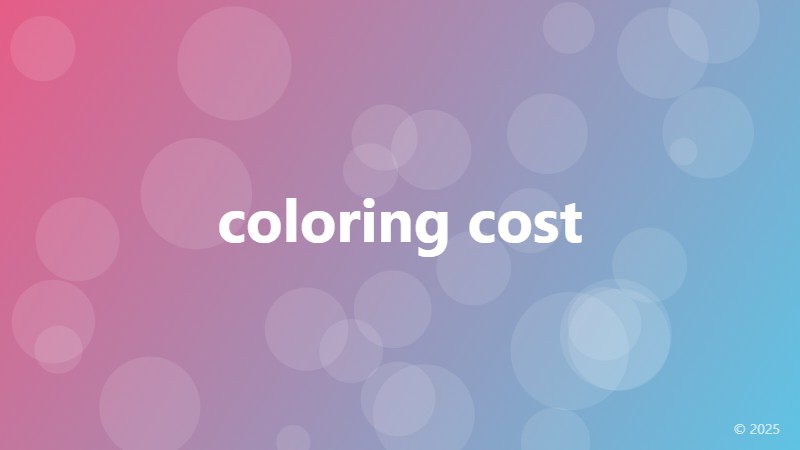coloring cost

Understanding the Concept of Coloring Cost
When it comes to printing, packaging, or design, the term "coloring cost" might seem unfamiliar to many. However, for businesses and individuals involved in these industries, understanding the concept of coloring cost is crucial to make informed decisions and optimize their budget. In this article, we will delve into the world of coloring cost, exploring what it means, how it's calculated, and its significance in various industries.
The Definition of Coloring Cost
In simple terms, coloring cost refers to the additional expense incurred when using multiple colors in a design, printing, or packaging process. This cost is typically calculated based on the number of colors used, the complexity of the design, and the production method employed. The coloring cost can vary significantly depending on the industry, material, and technique used.
Factors Affecting Coloring Cost
Several factors contribute to the overall coloring cost, including:
1. Number of colors: The more colors used, the higher the coloring cost. This is because each color requires a separate plate, ink, or toner, increasing the production expense.
2. Design complexity: Intricate designs with multiple colors, gradients, or patterns require more time, effort, and resources, resulting in higher coloring costs.
3. Production method: Different production methods, such as offset printing, digital printing, or screen printing, have varying coloring costs due to differences in equipment, ink, and labor requirements.
4. Material: The type of material used, such as paper, plastic, or fabric, can impact the coloring cost. For example, printing on a specialty material like metallic paper may be more expensive than printing on standard paper.
Industries Where Coloring Cost Matters
The significance of coloring cost extends to various industries, including:
1. Printing: Commercial printing, packaging, and label printing all involve coloring costs. Understanding these costs helps printers and print buyers optimize their budget and make informed decisions.
2. Design: Graphic designers, branding experts, and marketing professionals need to consider coloring costs when creating visual identities, logos, and marketing materials.
3. Packaging: Food, beverage, and consumer goods companies must factor in coloring costs when designing packaging that stands out on store shelves.
By grasping the concept of coloring cost and its influencing factors, businesses and individuals can make more informed decisions, optimize their budget, and create visually appealing designs that meet their goals without breaking the bank.